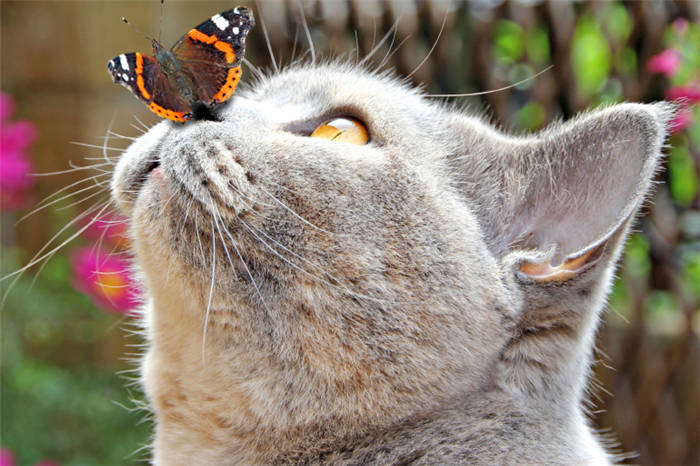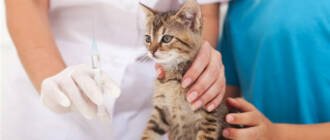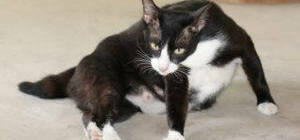In cats, the nose is the most important organ. Its functions include not only capturing, identifying odors. A wet nose allows the animal to accurately determine the direction of air currents. This allows you to know the location of the source of the smell or hide its presence from the object of the hunt. If the nose dries out, it cannot perform this function. To keep the organ in good condition, special glands produce mucus to create a protective coat that prevents it from drying out. In addition, the cat regularly licks the nose to keep it moist. This organ is also a component of the thermoregulatory system. The evaporation of moisture lowers the body temperature. That is why a cat licks its nose more often when it is hot.
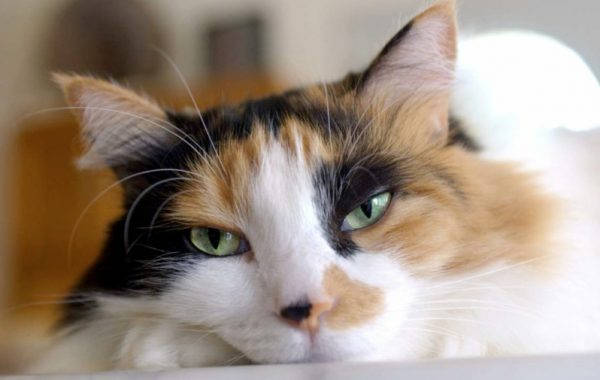
- What does a cat's wet or dry nose mean?
- When a dry lobe is the norm.
- Possible causes
- Dry and hot cat nose as a sign of illness
- What should be the nose of a healthy cat?
- When is a dry nose a sign of illness?
- When is a dry nose a sign of illness?
- What to do if the cat has a dry nose?
- Is there any danger if the cat's nose is wet
- How to help the cat
- What to do if illness is suspected
- Pathological causes of dry nose in a cat
- First aid if the cat has a dry nose
- Preventive measures
- The main causes of fever
- Ways to help
What does a cat's wet or dry nose mean?
Maybe you know a lot about cats. Maybe you're just starting to expand your feline horizons. But in any case, you have heard or read that the nose (or more precisely, the nose wetness) is an indicator of the cat's well-being. Wet and cool indicates good health, dry and warm, respectively, bad health.
What to say? Another misconception. The temperature and degree of moistness of a cat's nasal lobe does not say about anything if taken out of context. That is, if you don't take into account the conditions the cat is in when (or shortly before) your finger comes into contact with the lobe, and what it's doing.
When a dry lobe is the norm.
- During sleep, half asleep and in the first half an hour (approximately) after awakening the cat's nasal lobe is warm and dry. The fact is that during rest the nasal glands hardly produce any secret, and the cat doesn't lick itself.
- Very energetic but perfectly healthy states – playing games, running around the house and other activities will also "dry" the lobe as the body temperature rises.
- Very young kittens have not yet established thermoregulation, so babies' noses are often warm and dry.
- The lobe will dry out for a while if the cat is very nervous. Of course, stress can hardly be classified as a healthy condition. But, agree, without them, stress, the most comfortable existence of the pet itself is impossible.
- The process of digestion also plays a role: a dry nose of a hungry or overeating cat.
- Of external factors, dryness in the room, as well as heat and stuffiness should be noted – at high air temperature the moisture evaporates quickly.
Possible causes
Dry nose in a cat – not yet a symptom of disease. Such a sign can manifest itself if the tailed cat:
- Has been in the sun or in a room with low humidity levels for a long time, actively playing and running around. As soon as the temperature normalizes, your pet's nose will become moist again.
- Out for a walk in the wintertime. In cold weather, the precious olfactory organ is easy to frostbite, so cats don't lick it when they go outside.
- Woke up recently. Purrs also don't moisten their noses with their tongues when sleeping.
Often the nose is also dry in small kittens. The explanation is simple: the moisturizing film has not yet formed due to their small age, and babies have not yet learned to lick themselves.
Dry and hot cat nose as a sign of illness
If you find your pet with a similar symptom, be attentive. Feel the pet's ears – they should not be too hot. If possible, you should measure the pet's temperature with a special rectal thermometer. It is better to do this with the two of you, wrapping the pet in a thick towel.
Serious cause for concern besides a dry and hot nose in a cat may be the following symptoms:
If you do not observe any suspicious changes in the animal's behavior, dry cat's nose should not cause concern. The presence of the above symptoms is a reason to go to the veterinary clinic immediately.
If the cat has a dry nose and hot ears, it is categorically not recommended:
Self-treatment and "folk" methods can harm the animal, so if you see alarming symptoms, you should first show him to the specialists.
What should be the nose of a healthy cat?
A healthy cat's nose is moist, cool and slightly slippery. The cat regularly licks it, and it is also covered with a special secretion that creates a protective mucous membrane. The cat's nose is not just an organ of sense of smell. It uses it to determine the direction of the wind, the temperature of an object, and even to touch with its nose along with the vibrissae. Constant moisture on the surface of the nose increases its sensitivity, while a dry nose cracks, causes discomfort and fails to cope with its functions.
A very young kitten's dry nose comes from the fact that he himself is not yet able to lick, and the moisturizing secret is not yet secreted due to his age.
When is a dry nose a sign of illness?
A dry nose by itself is not a sign of illness. If it is dry and hot, with the ears also hot, you can talk about an increase in the cat's body temperature. The temperature in cats and other animals is measured rectally, by gently inserting the thermometer to 1 cm into the anus and holding it for about a minute.
A cat's normal temperature is 38-39 degrees, with holohaired breeds the norm is 39-40 degrees. In kittens and pregnant cats, the norm moves up 0.5 degrees. An increase of one degree is not critical, but a higher temperature requires urgent consultation with a veterinary specialist.
If you can't go to the doctor right away, you can wait a few hours. During these hours, the cat should periodically put an ice pack on its head or under its chin, or give it water from a syringe without a needle with warm water. A bare-haired cat can be wiped with a wet towel and a fluffy cat can be sprinkled with water from a sprayer.
Important: Do not bring down a cat's fever with aspirin, paracetamol, nimesulide and other drugs from the human medicine cabinet. This is fatal for animals.
Immediately it is necessary to go to the doctor when the cat has a dry and hot nose, and along with it are noted:
- cramping;
- coughing;
- sneezing;
- prolonged vomiting;
- diarrhea;
- Difficulty in urination;
- drops of blood in the urine or stool;
- constipation;
- fever of more than two degrees;
- loss of consciousness;
- abnormally long sleep;
- foaming from the mouth or profuse salivation;
- profuse discharge from the eyes, genital lash (not to be confused with the female's heat), and anus;
- shouting for no apparent reason;
- shaky gait;
- loose or piled hair;
- skin rashes;
- Difficult or hoarse breathing.
When is a dry nose a sign of illness?
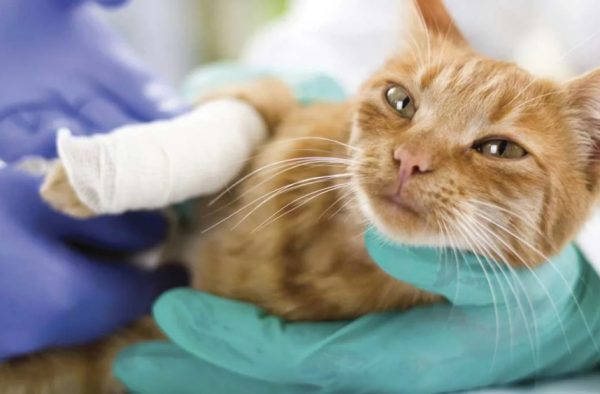
A dry cat nose is often a sign of illness. One cause is a clogged stomach with hairballs. Buy a special exfoliating food at the pet store.
Also, collecting seeds in a tray will help: just pour the tray with water according to the instructions, and in a few days your pet will enjoy the young grass. With the grass, the hair accumulated in the stomach comes out of the pet's body.
Owners often complain that the cat eats too much. Her body can not cope with large doses of food, which leads to a malfunction in the digestive system and is manifested by dry sinuses. Fighting overeating is easy – put as much food in her bowl as she can eat throughout the day.
In addition to the nose, a striking indicator of a pet's health are the ears. If they are hot and pink on the inside, this is a sign of illness. Take your pet to the vet. Keep an eye on your pet- poor appetite and apathy toward toys are also signs of sickness. Call the doc!
What to do if the cat has a dry nose?
Hyperthermia is a major ailment in cats that leads to a dry nose. Watch your cat for 2-3 hours: how and how much she eats, whether she goes to the toilet, whether she is playful or apathetic, etc.
Read more ► A cat with heavy abdominal breathing, not eating: physiological and pathological causes, first aid, treatment
If the lethargic state of the animal does not go away, contact your veterinarian. It is also not worth delaying the visit to the doctor if the cat does not allow to touch the stomach, lashes out, scratches or it periodically shows yellow-green bubbles from the nose.
You can make the cat feel a little better by periodically putting something cool on its armpits and groin area. Also moisten the cat's fur – this will slightly lower the body temperature. Do not diagnose the cat – this can only be done by a specialist.
Wait until the doctor arrives, and while he is on his way to you, stay with your pet. Gently speak to her, pet her on the head, so she will need support.
Is there any danger if the cat's nose is wet
As we mentioned above, if a cat's nose is wet all the time, it's no guarantee that he's in good health. For example, not all animal diseases are accompanied by a temperature increase, which leads to a dry nose. In addition to the moisture in the nose of the problems with health can speak about his color:
- A pronounced pallor in the skin of the nose is a signal of possible problems with the cardiovascular system;
- Livid hue – a sign of intoxication or oxygen starvation, which can be caused by obstructed airways or diseases of the respiratory system;
- A pale yellow color can indicate liver and gallbladder disease.
Also, if the nose is moist but too cold, it may be caused by hypothermia, poisoning, shock or anemia. If you notice such signs in your cat, watch him closely and better consult your veterinarian.
How to help the cat
If the dry nose is accompanied by other signs of ill-health, only a specialist can provide expert help and prescribe treatment. But if you have to wait for a doctor to be called, you can help the pet yourself:
- The first thing to do is to ensure that the pet is at rest. Exclude playing games or too long or any other activity, protect the cat from possible stress factors;
- When you find signs of fever or manage to measure it – in no case do not bring it down with drugs designed for humans. In most cases they are extremely toxic for the animal's body and will only harm it, up to and including death. Make the pet's condition easier by wetting its fur with water, or by applying cool compresses on the stomach, armpits and the back of its neck. Remember that the normal temperature for cats is 37.7 to 39.1° C;
- If the cat refuses water for a long time, try to give water from a syringe. Pour water into his mouth slowly, a few drops at a time so that he does not choke.
If his condition rapidly deteriorates, try to get him medical attention without delay.
What to do if illness is suspected
If hyperthermia occurs, you can try to bring the temperature down a little with improvised means. To do this, ventilate the room, wet the coat with water, apply cold compresses to the armpits and armpits of the pet.
Avoid dehydration. If refusing water, feed your pet with an eyedropper or syringe. Crusts that have appeared on the lobe can be soaked with chlorhexidine or furacilin. If these actions do not help, and the pet is experiencing painful symptoms – seek help from the veterinary clinic.
Remember that cats should not be given antipyretics without prescription. Most human drugs are toxic to them and may cause severe poisoning or an allergic reaction.
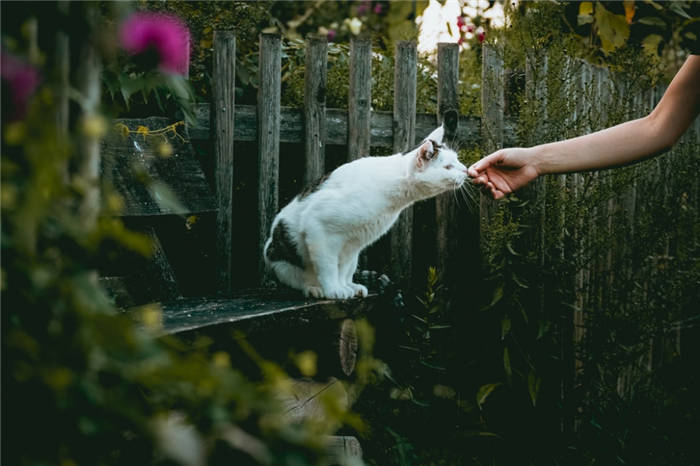
After the examination, the doctor will tell you what to do if the cat or cat has a dry nose, based on the results. If there is a threat to life, the whiskered patient will be left in the hospital until the normalization of the condition.
You should not panic at the sight of a dry cat nose. If it is detected, observe your pet and the accompanying symptoms. If the playfulness and good appetite have not disappeared, relax and analyze the situation. Physiological reasons are easy to determine by yourself, so just remember them to avoid unnecessary worry in the future.
This article is for informational purposes. Contact your veterinarian!
Pathological causes of dry nose in a cat
When exposed to natural causes, a warm and dry cat's nose does not last long. After a few minutes or hours, the outer part of the olfactory organ becomes moist and cool. But it also happens that the condition of the pet does not stabilize, the nose remains warm or even hot. In addition to changes in the temperature of the nose, the cat has a number of other signs that indicate the development of a pathological process:
- Apathetic states and lethargy;
- loss of appetite or complete refusal of food;
- long and prolonged sleep;
- problems with heart rhythm;
- Polydipsia (increased thirst);
- impaired respiratory function – shortness of breath;
- discharge from the nasal passages and eyes;
- restless behavior;
- Disorders of stool and digestion, manifested by bouts of nausea, vomiting and diarrhea.
The occurrence of the above symptoms directly indicate the development of a pathological process. Dry nose in this case is only one component of the overall clinical picture.
In addition to the condition of the mucosa, or rather its moisture, it is necessary to note and change in shade. Pale and warm to the touch of the cat's nose – most often a sign of the development of processes of pathological nature in the cardiovascular system. Bright pink color of the nasal mirror, which is not typical for a cat in the normal state, indicates the development of infectious lesions. Livid color more often indicates problems in the respiratory system (lack of oxygen, inflammation in the pulmonary structures and intoxication). Problems in liver function are indicated by a yellowish shade of the cat's nasal lobe.
Only a veterinarian has the right to make an accurate diagnosis, and even more so to prescribe an appropriate therapy regimen. Specialist in addition to examining necessarily conduct a series of studies to determine the exact cause of the violations in the patient's body. The most common causes of inflammation and subsequent rise in body temperature are:
First aid if the cat has a dry nose
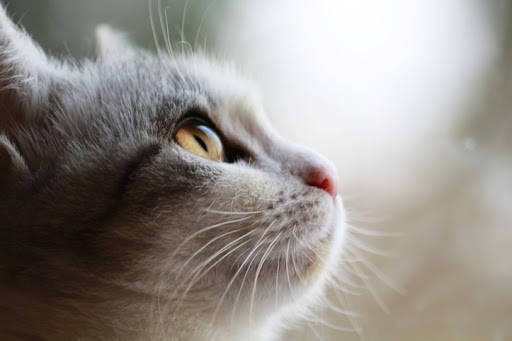
Hot and dry nose in the pet, no reason to panic, if it is caused by natural causes and passes on its own. But in the presence of similar symptoms for several hours with a clear deterioration of the general condition, it is recommended to seek help at the veterinary hospital. To help the cat at home is problematic, because it is almost impossible to reliably identify the factors influencing the development of deterioration.
Self-prescription of medicines without prior consultation with a doctor often leads to unfortunate consequences.
For example, self-administration of antipyretic drugs such as Paracetamol or acetylsalicylic acid leads to dangerous complications in the body.
If there is no way to go to a veterinary clinic right away for help, you can try to administer first aid at home. The greatest danger with an elevated body temperature, manifested by a dry nose, the development of dehydration. The cat should be given an opportunity to drink more water, preferably cool water. A cat that refuses to drink water on its own should be given water from a syringe with a needle removed or an eyedropper.
Animals that have no coat can be wiped with a cool, damp towel or cloth. A long-haired cat can be helped by spraying its coat with water from a sprayer.
If the pet's body temperature is over 39.5 degrees, you should try to bring it down with cold compresses. A small bag of ice wrapped in cloth should be applied to the groin area and head. It is forbidden to carry out such manipulations for a long time.
Preventive measures
Prevent conditions that cause drying and temperature changes of the nasal lobe, it is possible. Here are a few tips:
- Take your pet regularly for preventive check-ups. Get necessary vaccinations on time. Treat his coat for parasites and use antihelminthics to prevent them.
- Follow the veterinarian's recommendations when treating your pet. Do not self-medicate, so that the disease does not cause complications and do not become chronic.
- Watch the cat's diet. The menu should have sufficient calories, contain the necessary amount of vitamins and minerals. Don't give your whisker any unhealthy foods or questionable treats.
- Special pastes can help prevent the formation of hairballs in the gastrointestinal tract. You can also give the pet a special herb, which removes hair from the stomach, or pick up a suitable food.
- Do not allow your cat to have contact with sick animals. If you have several cats, isolate sick ones from healthy ones.
- Make the house as comfortable as possible. Keep the room where the cat lives at the right temperature and humidity. Ensure that the cat has constant access to clean water.
Closely observe the pet in order to notice negative symptoms in time and take action if necessary.
The main causes of fever
An elevated body temperature is a common symptom. There are many cat diseases accompanied by this symptom. Only a veterinarian can make an accurate diagnosis after an examination. The most common causes of fever include:
Any of these conditions require professional diagnosis, treatment prescription, medication selection and dosage.
Attention must be paid to disease prevention, to reduce the risk of their occurrence. In order to prevent the accumulation of hair in the digestive organs, you need to buy special food at the pet store, sow grass that removes hair from the body. Sometimes overeating leads to gastrointestinal malfunction. If the cat has an excessive appetite, you should control the amount of food.
Ways to help
If the cat's nose has become hot, dry for no natural reason, this phenomenon does not go away for several hours, there are other negative symptoms – the best help to the cat is to call a veterinarian. Determining the cause without qualification is difficult. Choosing treatment on your own often leads to serious negative consequences.
Cat owners should remember not to give their pets any antipyretics from their medicine cabinet. Paracetamol, aspirin and other drugs are very dangerous for animals.
It is not always possible to make an urgent visit to the veterinarian, and sometimes you have to wait a long time for the doctor to arrive. At this time you need to give your pet first aid, to relieve his condition. The main danger of fever is dehydration. The cat should be given cool water. If the animal cannot drink on its own, you can give some water with a syringe. Long-haired pets can also be sprinkled with a sprayer. Non-coated pets should be wiped down with a damp cloth.
The body temperature should be measured rectally first. If it does not exceed 39.5°C there is no need to bring it down before the veterinarian's examination. But a higher fever should be brought down. To do this, wrap an ice pack with a cloth and apply it to the armpits, groin and head. It is not allowed to cool one area for a long time.
